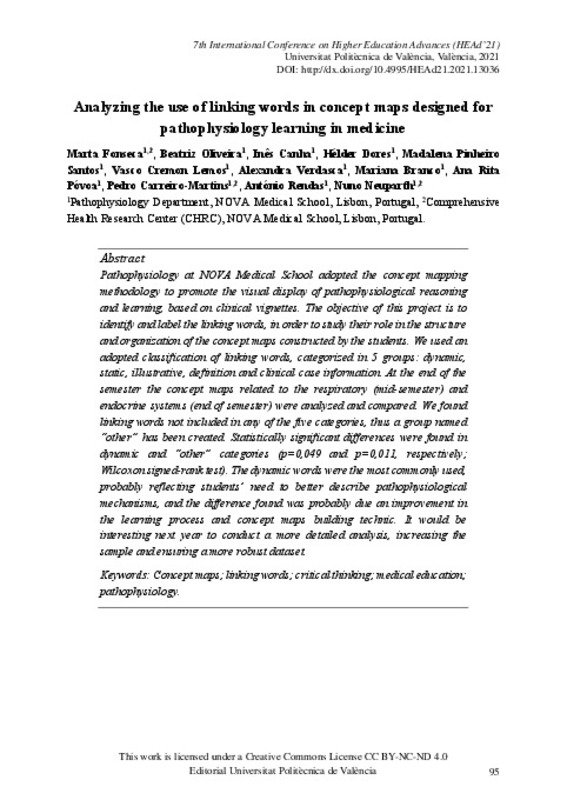JavaScript is disabled for your browser. Some features of this site may not work without it.
Buscar en RiuNet
Listar
Mi cuenta
Estadísticas
Ayuda RiuNet
Admin. UPV
Analyzing the use of linking words in concept maps designed for pathophysiology learning in medicine
Mostrar el registro completo del ítem
Fonseca, M.; Oliveira, B.; Canha, I.; Dores, H.; Pinheiro Santos, M.; Lemos, V.; Verdasca, A.... (2021). Analyzing the use of linking words in concept maps designed for pathophysiology learning in medicine. En 7th International Conference on Higher Education Advances (HEAd'21). Editorial Universitat Politècnica de València. 95-102. https://doi.org/10.4995/HEAd21.2021.13036
Por favor, use este identificador para citar o enlazar este ítem: http://hdl.handle.net/10251/172160
Ficheros en el ítem
Metadatos del ítem
| Título: | Analyzing the use of linking words in concept maps designed for pathophysiology learning in medicine | |
| Autor: | Oliveira, Beatriz Canha, Inês Dores, Hélder Pinheiro Santos, Madalena Lemos, Vasco Verdasca, Alexandra Branco, Mariana Póvoa, Ana Rita | |
| Fecha difusión: |
|
|
| Resumen: |
[EN] Pathophysiology at NOVA Medical School adopted the concept mapping methodology to promote the visual display of pathophysiological reasoning and learning, based on clinical vignettes. The objective of this project is ...[+]
|
|
| Palabras clave: |
|
|
| Derechos de uso: | Reconocimiento - No comercial - Sin obra derivada (by-nc-nd) | |
| ISBN: |
|
|
| Fuente: |
|
|
| DOI: |
|
|
| Editorial: |
|
|
| Versión del editor: | http://ocs.editorial.upv.es/index.php/HEAD/HEAd21/paper/view/13036 | |
| Título del congreso: |
|
|
| Lugar del congreso: |
|
|
| Fecha congreso: |
|
|
| Agradecimientos: |
Grateful thanks are due to the teaching staff of pathophysiology, tutors Manuel Almeida, Patrícia Santos, Diana Ferreira, Miguel Proença, Ana Rita Franco, Luísa Quaresma, Vasco Gaspar and António Mesquita, and the junior ...[+]
|
|
| Tipo: |
|









